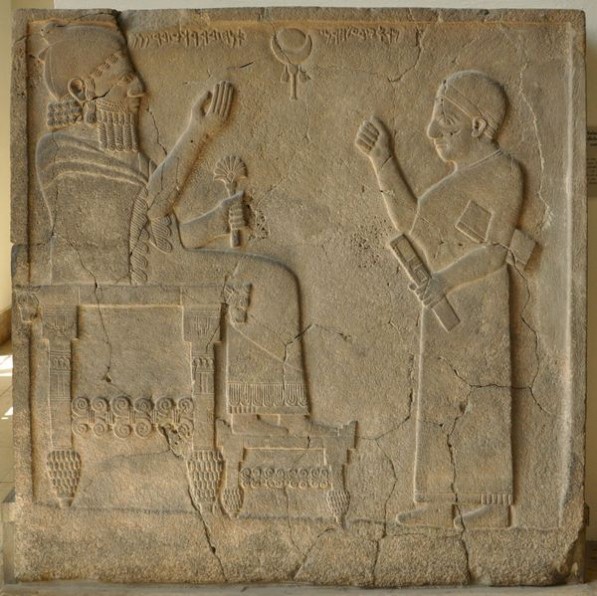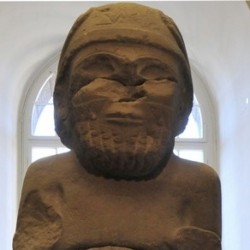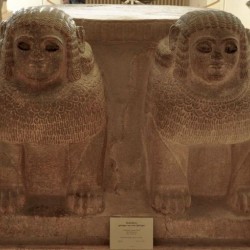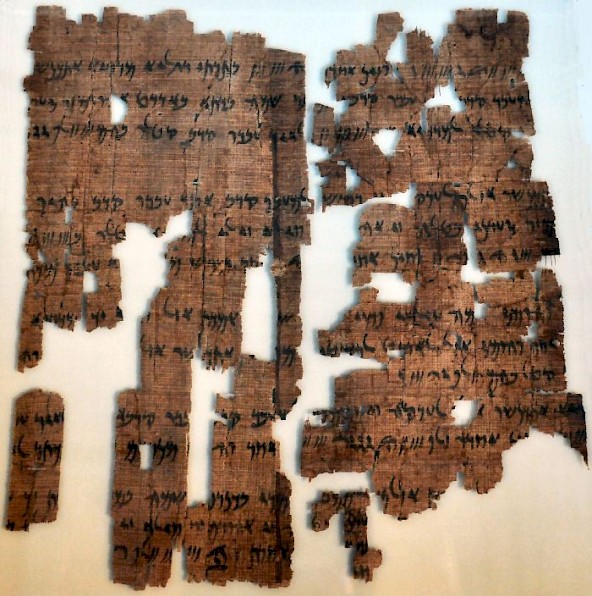Aramaeans
Q185461Aramaeans: name of the Iron Age people living in what is now Syria. Their language, Aramaic, became the lingua franca of the ancient Near East.

Perhaps, the Aramaeans are best understood as a group of city states and semi-nomadic tribes from the Iron Age, speaking related West-Semitic languages, in the area of what is now called Syria. They were certainly not the only inhabitants: they shared this region with people with Hittite ancestors, who venerated the ancient Hittite gods, continued Hittite artistic traditions, and were also called Hittites (or “Neo-Hittites” by modern scholars).
The Aramaeans have their origin in the collapse of the old Bronze Age system in the first half of the twelfth century BCE. Syria, which had been part of the Hittite Empire, witnessed the rise of several new political entities, where people spoke Aramaic (a language related to Phoenician and Hebrew). Their names suggest a tribal nature: for instance, Bit Agusi an Bit Adini (“Land of Gusi” and “Land of Adin”) are named after the eponymous ancestors of these tribes.note However, although there was undoubtedly a tribal, pastoral element in Aramaean society, there were also Aramaeans who cultivated the soil.
It has been thought that these people were immigrants, but it is also possible that they had always been there, but left no traces in the written (Akkadian) record, as we would expect from peasants and shepherds. They could become “visible” only after the collapse of the Bronze Age system.
It is hard to distinguish the Aramaeans from the Neo-Hittites. In Sam’al, the capital of Bit Gabbar, for example, we find a state that first used to be ruled by kings with Hittite names, but later by kings with Aramaic names. There may have been a political change, but it is also possible that the old names just went out of fashion.
Some Aramaean states are:
-
Bit Zammani (capital: Amedi)
-
Nasibina (capital: Nisibis)
-
Bit Bahiani (capital: Guzana)
-
Bit Adini (capital: Til Barsip)
-
Laqe
-
Bit Agusi (capital: Arpad, another important town was Halab/Aleppo)
-
Bit Gabbar or Yu’addi (capital: Sam’al)
-
Hamat or Lu’ash (capital: Hamat)
-
Bit Rehob (capital: Soba)
-
Aram (capital: Damascus)
In the east, Assyria was the mighty neighbor of the Aramaeans. Already in 1110 BCE, king Tiglath-Pileser I waged war against the Aramaeans, trying to seize control of the valleys of the Habur and the Middle Euphrates.note He even reached Tadmor (Palmyra). Conflicts are frequently mentioned, but the real conquest of the Aramaean region took place in the ninth century: Aššurnasirpal II (r.884-859) reached the Euphrates, and Šalmaneser III (859-824) crossed it, subjecting all Aramaean city states. Many Aramaeans were deported.
 Zincirli-Gerdshin, Statue of Hadad |
 Zincirli, Column base: a double sphinx |
 Tell Ahmar, Procession of servants |
 Tell Fekheriye, Statue of king Hadad-yisi |
The Aramaeans venerated the gods of the ancient West-Semitic pantheon. Their supreme deity was Hadad, the storm god. Other deities were Reshep, the Moon god Sin, and El. However, we also find sacrifices to the Babylonian Sun god Šamaš, indicating a pantheon that was open to foreign influences. We find the same openness in their art, which was originally influenced by the Hittites, and later by Assyria.
Aramaic Language

Their main legacy was their language: because the Assyrians had deported so many of them, and because traders were everywhere, there were people speaking Aramaic all over the ancient Near East. Besides, their writing system, which indicated long vowels, was very practical. These two factors contributed to the popularity of Aramaic, which became the lingua franca of the Achaemenid Empire and replaced many older languages (e.g., Hebrew). Now called Syriac, it is still a liturgical language for several eastern churches.
Literature
- H. Gzella, A Cultural History of Aramaic. From the Beginnings to the Advent of Islam (2014)